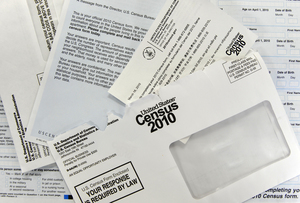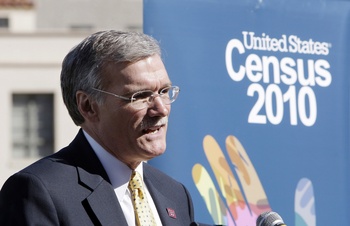10 off-beat U.S. Census facts from the past, present and future
It's time to tally, so says Article I, Section 2 of the U.S. Constitution. That section states everyone in the U.S. should be counted every 10 years.
The U.S. Census Bureau mailed 120 million, 10-question Census forms to residents in mid-March.
In honor of the big count, AnnArbor.com spoke to experts, including Ann Arbor resident Barbara Everett Bryant, director of the 1990 Census and author of Moving Power and Money: The Politics of Census Taking. We uncovered some facts you might not know about the decennial event, which distributes congressional seats and lots of tax dollars.
Censuses of the Past
1. Oldest U.S. Survey
The U.S. Census has taken place every decade since 1790. Because it's protected by the Constitution, it's the longest running periodic census in the world.
2. Moving money
The federal government hasn't always allocated money to the states based on population data. Richard Nixon first proposed revenue sharing on the basis of each state's population size in the 1970s. In 2008, the government transferred $447 billion to the states based on population counts and related data.
3. Changes through the decades
Census forms have changed considerably over the years. According to Bryant, some of the wildest questions can be found on the 1890 Census form. Census takers back then went from household to household, asking impossible questions like whether the members of the household were one-eighth black. "The Census takers had to be just judging on the shade of color," Bryant said. The Census taker also inquired if anyone in the household was feeble minded.
4. Just how big of an undertaking is the Census each decade?
Here's one measure: The 1990 Census called for the distribution of 17 tractor-trailer loads of paper clips to 500 temporary offices.
The Census Present

Lon Horwedel |
AnnArbor.com
4. Shortest form since 1790
The 2010 questionnaire - its tag line is "10 Questions in 10 Minutes" - is the shortest Census form since 1790. Besides a few basics, like names of household members, the form asks six demographic questions.
5. Two chances to respond by mail
The 2010 Census will mark the first time that the government will send out a second mailing to households that don't fill out their forms by April 9.
6. More technology, more interaction
The 2010 Census includes an interactive map with live daily participation rates and a blog from 2010 Census Director Robert Groves. Staff have been answering questions posed in the comments section in his blog, though the better place to get answers is at the official Question & Answer Center.
7. How are the homeless counted?
The Census Bureau has special plans to count those who are homeless. They will be counted at service-based locations such as emergency and transitional shelters, soup kitchens, regularly scheduled mobile food vans and pre-identified non-sheltered outdoor locations. Be Counted forms will also be made available at locations throughout the community for those who believe they have not been counted.
Censuses of the Future
8. Census 2020
Planning for the Census 2020 is already under way.
9. A digital Census?
Groves has said the Internet will be integrated into the 2020 Census, but has also pointed out its planners' predicament - it's impossible to know what the Internet will look like at that time. Mail is still expected to be a big part of the count in 2020.
Past, present and future
10. Ann Arbor has strong ties to the Census, turning out three directors.

Census Bureau Director Robert Groves talks about filling out the 2010 Census forms during a news conference Monday, March 15, 2010, in Phoenix, Ariz. Groves is a sociology professor from the University of Michigan.
AP Photo | Ross D. Franklin
Groves was a University of Michigan professor and the director of the U-M Survey Research Center before President Barack Obama picked him for the job. He also holds master’s degrees in statistics and sociology and a doctorate from U-M. Bryant, the director of the 1990 Census, is an Ann Arbor resident and research scientist emerita with the Ross School of Business. Martha Farnsworth Riche, the director from 1994 to 1998, grew up in Ann Arbor and earned bachelor's and master's degrees in economics from U-M.
Juliana Keeping covers higher education for AnnArbor.com. Reach her at julianakeeping@annarbor.com or 734-623-2528. Follow Juliana Keeping on Twitter

